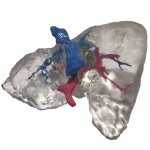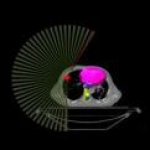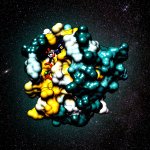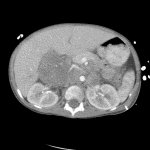
News • First-of-its-kind study
Computer-assisted colonoscopies reduces rate of missed lesions
Decreasing the rate of missed lesions could translate into fewer cases of colon cancer.

Decreasing the rate of missed lesions could translate into fewer cases of colon cancer.

Over the past decade, scientists have been exploring vaccination as a way to help fight cancer. These experimental cancer vaccines are designed to stimulate the body’s own immune system to destroy a tumor, by injecting fragments of cancer proteins found on the tumor.

Researchers at the University of Helsinki could show for the first time that normal human fibroblast cells can be converted to specific cancer cells using only factors that are commonly detected in actual human patients. Previous studies have achieved this only by using powerful viral factors that are not common in human cancers. Since many human cancer types still lack specific diagnostic…

A solid diagnosis has always been the first step on any patient’s journey to health. However, diagnostic categories are necessarily oversimplifications. In the last decades, medical professionals and scientists have begun to uncover the true variability in patients’ physiological and biochemical make-up that is the principal cause for individual variations in the way diseases present…

The goal of tumour conferences is to determine the best treatment for patients with complex cancers – however, the patient is rarely present. Now, a team of researchers has investigated whether cancer patients can benefit from participating in these meetings.

Cancer patients’ medical records can often comprise up to 100 terabytes of individual — and usually very heterogeneous — data, including blood and tumor values, personal indicators, sequencing and treatment data, and much more besides. Up to now, it has been virtually impossible to use this wealth of information efficiently due to a lack of appropriate processing mechanisms. As a result,…

Cancer informatics and digital pathology provider Inspirata announced that King’s Health Partners ECMC and Guy’s and St Thomas’ NHS Foundation Trust will pilot its Trial Navigator software as part of an evaluation the organisations are conducting into how artificial intelligence based automation can improve the identification and efficiency of matching patients with cancer to early phase…

Quality assurance in cancer medicine has a reputation for being expensive and involving considerable outlay. For the first time, a cost-effectiveness analysis has now shown that patients treated in certified cancer centers not only survived longer than patients in non-certified hospitals, but also cost less, despite the greater resource commitment required. This was established by health…

Pancreatic cancer is one of the deadliest cancers in the world, and one of the most difficult to treat. In 2020, an estimated 495,000 individuals worldwide were diagnosed with pancreatic cancer and an estimated 466,000 died, according to statistics from the World Health Organization’s International Agency for Research on Cancer. Most patients with advanced disease die within a year of…

Cancer care and the treatment clinicians can offer patients is being increasingly enhanced by Artificial Intelligence (AI). The technology has a role in diagnosis, with algorithms trained to design and deliver patient care, can match patients to clinical trials they may benefit from, and even help predict outcomes and those at greatest risk.

Miniature tumours in the lab are able to predict whether the corresponding real-life patients will benefit from immunotherapy. “We’ve solved a major problem many scientists had been facing: preserving a tumours original composition and structure outside of the patient in the lab”, says cancer researcher Daniela Thommen.

A new way to target a mutant protein which can cause the deadliest of cancers in humans has been uncovered by scientists at Leeds. The mutated form of the RAS protein has been referred to as the “Death Star” because of its ability to resist treatments and is found in 96% of pancreatic cancers and 54% of colorectal cancers. RAS is a protein important for health but in its mutated form it can…

Queen Máxima of the Netherlands, after whom the Princess Máxima Center for Pediatric Oncology in Utrecht is named, along with several representatives of the center, the Hopp Children’s Cancer Center Heidelberg (KiTZ), University Hospital Heidelberg (UKHD) and the German Cancer Research Center (DKFZ), signed a memorandum on strategic cooperation in the field of pediatric oncology in Europe at…

Over recent years interventional oncology (IO), as a subspecialty of interventional radiology, has become a standard component of many cancer therapies. The broad range of minimally invasive methods – and their results – are often comparable to those of traditional approaches, such as surgery, chemotherapy or radiotherapy, e.g. with regard to hepatocellular cancer (HCC), oligometastatic…

Final results from a study of a blood test that can detect more than 50 types of cancer have shown that it is accurate enough to be rolled out as a multi-cancer screening test among people at higher risk of the disease, including patients aged 50 years or older, without symptoms. In a paper published in the cancer journal Annals of Oncology, researchers report that the test accurately detected…

A study showed that women are underrepresented in oncology, neurology, immunology, cardiology, hematology; whereas men underrepresented in trials related to mental health, musculoskeletal disease and trauma, and preventive care.

Researchers from the University of East Anglia have developed a new urine test for prostate cancer which also shows how aggressive the disease is.

Is artificial intelligence (AI) technology ready to be utilized as a clinical tool by interventional oncologists? Not yet, but when it is, AI technology’s clinical impact may be as profound as advanced imaging is today, two leading experts agree.

A chemist from Purdue University has found a way to synthesize a compound to fight a previously "undruggable" cancer protein with benefits across a myriad of cancer types.

The pandemic could challenge what little achievement has been made so far in the field, a prominent Spanish medical oncologist explained during the virtual European Lung Cancer Conference

Despite Brexit uncertainties, four leading UK cancer research experts expressed optimism for continued pan-European collaboration and innovation during the online panel debate ‘Brexit deal: What it really means for cancer research and innovation’ hosted by the National Cancer Research Institute (NCRI).

The European Commission (EC) has concluded its review of the planned merger between Siemens Healthineers AG and Varian Medical Systems, Inc. and approved the transaction subject to certain conditions. In accordance with its commitments, the company will continue to keep its imaging and oncology software solutions interoperable with third-party offerings in the future. This concerns the connection…

With two commercially available inhibitors, the cell cycle of the cancer cells in neuroblastomas can be disrupted at a key point causing tumour cell death. Neuroblastomas are malignant solid tumours that occur mainly in early childhood. Inhibiting the MYCN oncogene or its function could be a promising therapeutic opportunity.

Hundreds of cancer patients have benefitted from using computer algorithms to manage their symptoms and improve their wellbeing in a unique UK trial. The early stage colorectal, breast or gynecological cancer patients took part in the trial of the eRAPID system, developed by the University of Leeds, which allowed them to report online symptoms from home and receive instant advice on whether to…

Hologic, Inc. has announced that it will acquire Biotheranostics, Inc., a privately held, commercial-stage company that provides molecular diagnostic tests for breast and metastatic cancers, for approximately $230 million, subject to working capital and other customary closing adjustments.